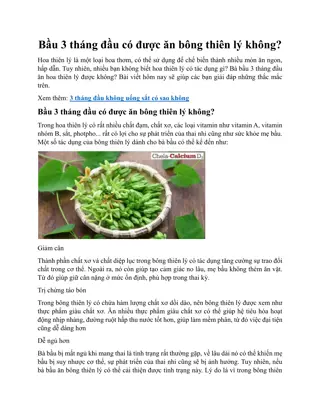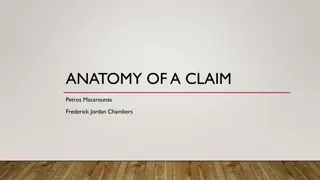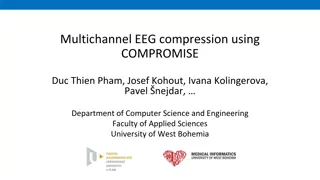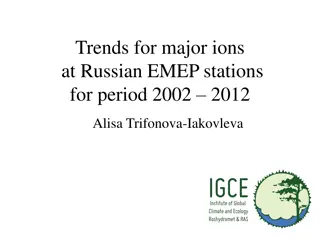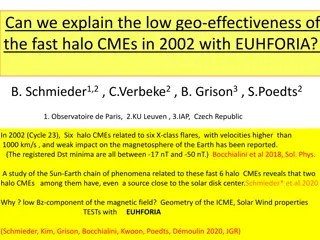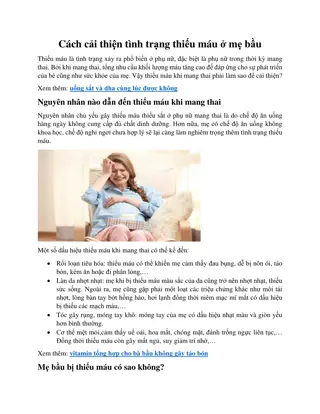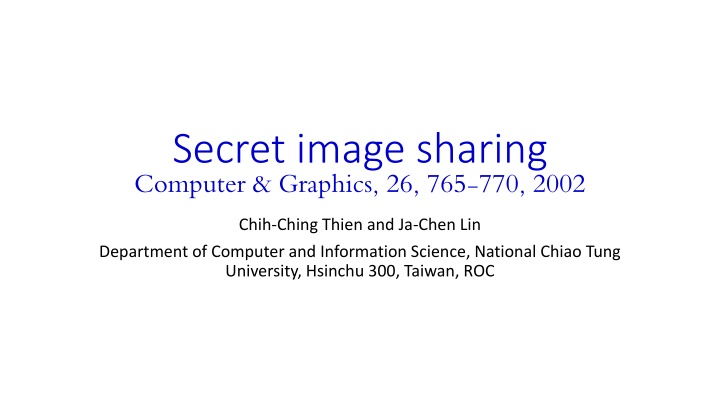
Advanced Secret Image Sharing Method Derived from Threshold Scheme
Proposed in 2002, a method for secret image sharing where a secret image is divided into n shadow images, any r or more of them can restore the original image. The method offers benefits in storage, transmission, and security.
Uploaded on | 0 Views
Download Presentation

Please find below an Image/Link to download the presentation.
The content on the website is provided AS IS for your information and personal use only. It may not be sold, licensed, or shared on other websites without obtaining consent from the author. If you encounter any issues during the download, it is possible that the publisher has removed the file from their server.
You are allowed to download the files provided on this website for personal or commercial use, subject to the condition that they are used lawfully. All files are the property of their respective owners.
The content on the website is provided AS IS for your information and personal use only. It may not be sold, licensed, or shared on other websites without obtaining consent from the author.
E N D
Presentation Transcript
Secret image sharing Computer & Graphics, 26, 765-770, 2002 Chih-Ching Thien and Ja-Chen Lin Department of Computer and Information Science, National Chiao Tung University, Hsinchu 300, Taiwan, ROC
ABSTRACT In this paper, we propose a method such that a secret image is shared by n shadow images, and any r shadow images (r n) of them can be used to restore the whole secret image. The size of each shadow image is smaller than the secret image in our method. This property gives the benefit in further process of the shadow images, such as storage, transmission, or image hiding
Outline 1. Introduction 2. The (r,n) threshold scheme: a review 3. The proposed secret image sharing method 3.1. The sharing phase 3.2. The reveal phase 3.3. The lossless secret image sharing method 4. The experimental result 5. Security analysis 6. The benefits of the size reduction property of shadow images 7. Conclusions
1. Introduction (Review and Motivation) Review: Blakley [1] and Shamir [2] first independently proposed the concept of secret sharing. It was called the (r, n) threshold scheme.The succeeding studies were mainly related to the security of the keys [3 6]. Motivation: When the secret data are in fact secret images, because the number of bytes used in a digital image is usually very large (for example, 512 x 512) and the gray value is bounded (0 255), using the (r, n) threshold scheme directly will waste a lot of memory space; we should therefore develop a specific method for secret image sharing
1. Introduction (Proposed Method) In this paper, we propose a secret image sharing method derived from the (r, n) threshold scheme. In our method, the size of each shadow image will be smaller than that of the secret image, as will be seen later. We will require that: 1. The secret image is used to generate n shadow images. 2. Any r or more shadow images can be used to reconstruct the secret image. 3. Any r-1 or less shadow images cannot get sufficient information to reveal the secret image.
2. The (r,n) threshold scheme: a review Suppose that we want to divide the secret data D (an integer) into n shadows (?1,?1, ,??), and we wish that the secret data D cannot be revealed without r or more shadows. To split D into n shadows, we randomly pick a prime number p and an r -1 degree polynomial ? ? = ?0+ ?1? + ?2?2+ + ?? 1?? 1??? ? In which, ?0= ?,??? ????????,??= ?(??), 1 ? ?. Note that {??; 1 ? ?} ??? ? ? ? ?????, each ??is a shadow. Given the r pairs out of n pairs {(??,??);1 ? ?}, the coefficients {?0,?1,?2, ,?? 1} of ? ? will be obtained, so is D=?0revealed. (1)
2. The (r,n) threshold scheme: a review In image sharing, to use Shamir s (r, n) threshold scheme directly, ?0 is taken as the gray value of the first pixel, then we obtain the corresponding output ? ?1~? ??; after that, ?0is replaced by the gray value of the second pixel, and the process repeats until all pixels of the secret image are processed. Hence, each shadow image is also of size 512 x 512 if the secret image is 512 x 512. ? ? = ?0+ ?1? + ?2?2+ + ?? 1?? 1??? ? (1)
3. The proposed secret image sharing method Suppose that we want to divide the secret image D into n shadow images (?1,?1, ,??), and the secret image D cannot be revealed without r or more shadow images. In the proposed method, we generate the r -1 degree polynomial, by letting the r coefficients be the gray values of r pixels. Therefore, the major difference between our method and Shamir s is that we use no random coefficient. Because the gray value of a pixel is between 0 and 255, we let the prime number p be 251 which is the greatest prime number not larger than 255. To apply the method, we must truncate all the gray values 251 255 of the secret image to 250 so that all gray values are in the range 0 250.
3.1. The sharing phase The image is divided into several sections. Each section has r pixels, and each pixel of the image belongs to one and only one section. For each section j; we define the following r-1 degree polynomial ??? = ?0+ ?1? + ?2?2+ + ?? 1?? 1??? 251 where {?0,?1,?2, ,?? 1} are the r pixels of the section, and then evaluate {???1,???2, ,?? ??} The n output pixels {???1,???2, ,?? ??} of this section j are sequentially assigned to the n shadow images. Since for each given section (of r pixels, each shadow image receives one of the generated pixels; the size of each shadow image is 1/r of the secret image. The following steps are the proposed secret image sharing method: (3) (4)
Algorithm for the sharing phase 1. Truncate all gray values larger than 250 to 250 so that the gray values of the secret image are in the range 0 250. 2. Use a key to generate a permutation sequence to permute the pixels of the secret image. 3. Sequentially take r not-shared-yet pixels of the permuted image to form a section. 4. Use the section in Step 3 and Eqs. (3) and (4) to generate n pixels for the n shadow images. 5. Repeat Steps 3 and 4 until all pixels of the permuted image are processed.
3.2. The reveal phase The following steps are the reveal phase using any r/n shadow images: 1. Take the first non-used pixel from each of the r shadow images. 2. Use these r pixels (a subset of {???1,???2, ,?? ??} ) and the Lagrange s interpolation to solve for the coefficients ?0~?? 1in Eq. (3). The coefficients ?0~?? 1are then the corresponding r pixel values of the permuted image. 3. Repeat Steps 1 and 2 until all pixels of the r shadow images are processed. 4. Applying the inverse-permutation operation to the permuted image to get the secret image.
3.3. The lossless secret image sharing method The method discussed in Section 3.1 is a lossy method because we must limit the gray value to the range 0 250 (see Step 1). To get a lossless image, we introduce below a special process to handle the gray values larger than 250. The processes will slightly increase the size of the shadow image. However, the increase is usually small because quite often there are only a few pixels whose gray values are 251 255.
4. The experimental result (4-6 Reconstruction)
5. Security analysis To solve for r unknowns using these r-1 equations like Eq.(1), there are 251 possible solution sets {(?0,?1,?2, ,?? 1)?}?=1 the first, second, , 251th set corresponds to ?0= 0; ?0= 1; ?0= 250; The possibility of guessing the right solution is only 1/251. 251, Now, there are 512x512/r polynomials (512x512/2=131,072 if r=2). The possibility of obtaining the right image is only 512 512/? 1 251
6. The benefits of the size reduction property of shadow images (1) One of the reasons to use secret sharing is to protect the secret from being lost or destroyed. We may apply the (r, n) threshold scheme directly to the secret image, but the size of each shadow image would be the same as the secret image. (2) On the other hand, our method can reduce the size of each shadow image to 1/r of the secret image s (r=2, 3, , n). The small size of each shadow image is a good property in practice. (3) Besides the saving of storage space or transmission time, some other benefits also exist. For example, we can easily use data hiding technique to hide each shadow image in some other images called host images.
7. Conclusions We proposed a method such that secret image can be shared by several shadow images. The size of each shadow image is 1/r of the secret image s in our method, and this small size property gives our method certain benefits including easier process for storage, transmission, and hiding. Two versions are provided to overcome the problem that some pixels of the secret image might have gray values not less than 250. As a final remark, some dot-com companies recently have provided free network hard disk with limited storage space for general users. Therefore, a user may have several network hard disks for storage. These network hard disks could be treated as the distributed storage, and each network hard disk just store one of the (smaller size) shadows. The proposed method is especially valuable here when the storage space of a single dot-com account is not enough to store the whole image.



